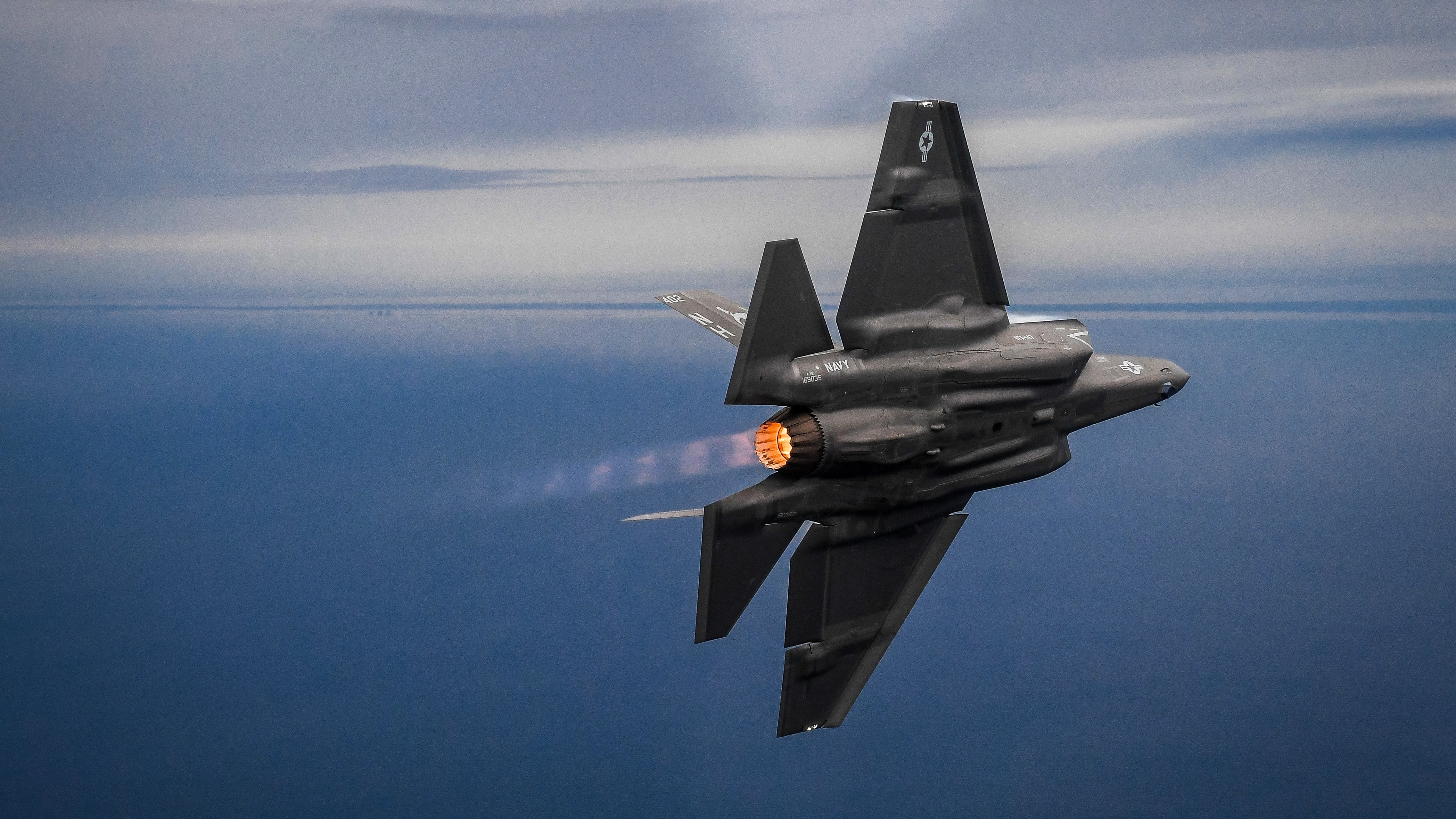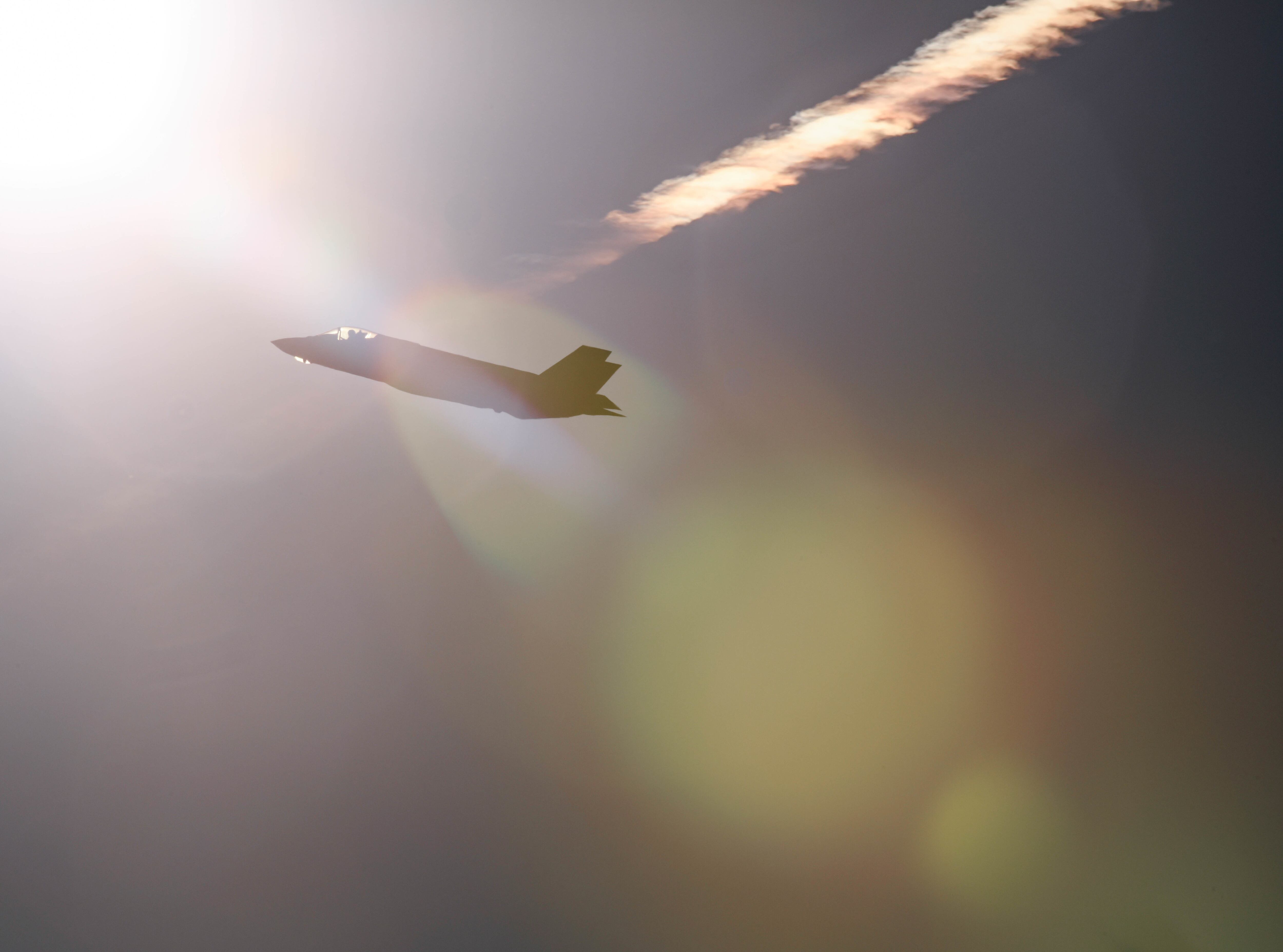WASHINGTON — F-35 tests necessary to complete the jet’s operational test phase have been temporarily paused as Edwards Air Force Base in California shuts down to help slow the spread of coronavirus.
On Friday, Edwards AFB shut its gates to all except mission essential personnel and residents. Flight testing at the installation has been suspended, and tests of the F-35’s Joint Simulation Environment have been been slowed as a result.
RELATED

“The F-35 Test Enterprise is experiencing impacts across most major verification venues as various organizations respond to federal, state, and local COVID-19 restrictions,” said Brandi Schiff, a spokesperson for the F-35 joint program office. Schiff later clarified that testing at Naval Air Station Patuxent River has also been affected by coronavirus-related constraints.
“As of today, F-35 flight test organizations have ceased flight operations, but organizations that can continue verification activities via telework are continuing to do so. Additionally, select lab and ground test activities are ongoing, and aircraft limited maintenance activities are ongoing to maintain fleet readiness," she said. “JSE verification and validation activities are continuing in a limited capacity at this time.”
Schiff added that the program office is taking steps so that test activities can resume quickly after COVID-19 restrictions are removed, but acknowledged that the situation could set back testing for certain aspects of the F-35 program.
“Although certain developmental and fielding activities will likely experience delays, the F-35 teams continue to assess ways of furthering efforts while protecting and preserving our workforce’s health and safety,” she said.
Lockheed Martin has seen the directive from the commander at Edwards Air Force Base and is working with base personnel to determine impacts on contractor-provided operations, said Lockheed spokesman Brett Ashworth.
The pause in testing could trigger a larger delay to the Joint Simulation Environment, which is already months late and has caused the Pentagon to put off a full-rate production decision for the Lockheed Martin-produced F-35.
RELATED

The JSE allows the Pentagon to conduct simulated evaluations of the F-35 in a range of high-threat scenarios, which makes it a critical technology for assessing whether the F-35 can beat actors like Russia and China without conducting live training that could provide an opportunity for espionage.
For that reason, Ellen Lord, the Pentagon’s top weapons buyer, decided to delay the full-rate production decision set to occur in December 2019 until the F-35 is able to complete the JSE-enabled tests as part of its operational test phase.
During a briefing on Wednesday, Lord could not verify whether the testing pause would cause another delay to the full-rate production decision.
“We have a number of areas where we have to pause across the department in terms of what we’re doing either in research and development or in testing and operations. I am in daily contact with [F-35 program executive officer] Gen. [Eric] Fick, at least once a day. The JPO is managing this well," she said. “Right now I can’t comment on the full-rate production decision, what I will tell you is we are moving forward. While we have COVID-19 we still have normal operations executing on our programs.”
The new full-rate production decision, now set for January 2021, is viewed as a symbolic show of confidence in the program’s maturity and does not actually impact the rate that the Defense Department will buy F-35s. The U.S. military already purchases the F-35 in large numbers, and the yearly production rate is set to boom from 134 jets in 2019 to upward of 160 by 2023, regardless of the production decision.
Earlier this month, F-35 JPO head Fick said the JSE would be ready as early as this summer.
“We continue to work on the joint simulation environment. We recently brought a new set of developmental testers into the environment to help us to more rigorously define how we assess its readiness for test," he said during the McAleese and Associates conference on March 4. "We believe that we will be to a point where we will execute that test in late summer or early fall timeframe — I think by September/October we should be complete.”
The latest report by the Pentagon’s independent weapons tester also indicated that the technology was on track to meet that timeline.
Robert Behler, the director of operational test and evaluation, wrote in the January report that the “JSE team was consistently meeting most planned timelines and appeared to be on a path to provide” a simulator for operational tests this summer.
Although the team had been slower than anticipated in integrating the JSE with the Lockheed Martin-provided F-35 in a box software — which includes all the data necessary to replicate the F-35 air vehicle and its aerodynamic performance in the simulator — the work seemed likely to meeting requirements, Behler wrote.
Valerie Insinna is Defense News' air warfare reporter. She previously worked the Navy/congressional beats for Defense Daily, which followed almost three years as a staff writer for National Defense Magazine. Prior to that, she worked as an editorial assistant for the Tokyo Shimbun’s Washington bureau.








